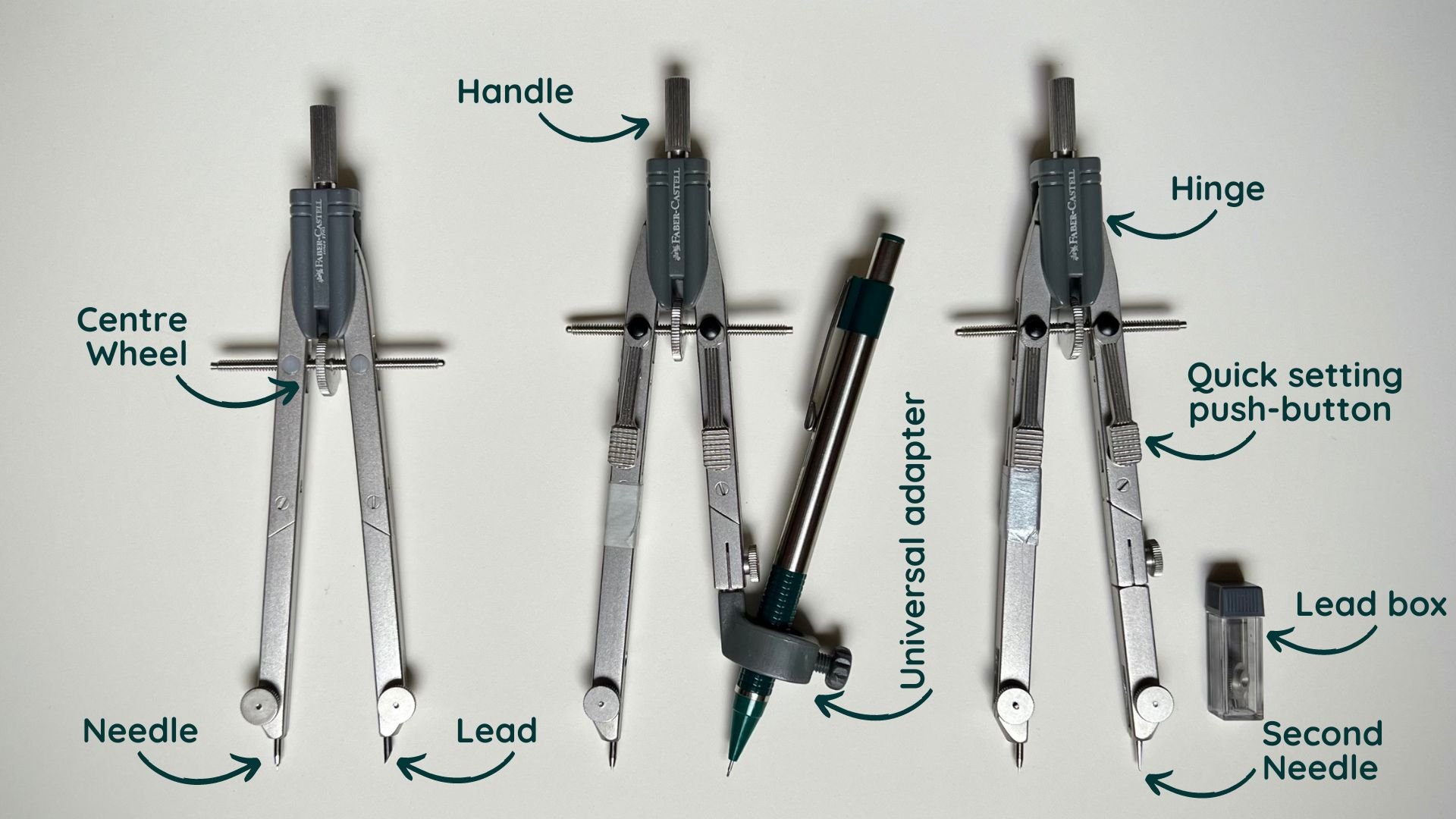Modern compasses are neither as well made, nor as beautiful, as vintage but can be purchased easily and are fine for a beginner. I use them alongside vintage compasses mainly because of the universal adapter, which allows me to draw with an automatic pencil instead of the pencil lead. With many circles to draw for a pattern grid, I find the automatic pencil hugely helpful in keeping a sharp line without the constant need to sharpen. The quick setting buttons, when pressed simultaneously, allow for a fast reset of the radius, which can then be fine tuned with the centre wheel. This centre wheel also prevents unwanted readjustment of the radius, a convenient thing when a hand is not yet accustomed to the amount of strength needed for drawing a circle. A second needle is usually included in the spare lead box. When placed in the compass instead of the lead, it turns the compass into a pair of dividers which are an incredibly handy tool. I have only discovered the merits of my dividers recently, which until now have had a lovely long nap in the velvet of my compass box. I must credit Mike Wyndham for bringing their usefulness to my attention. If budget permits, I would advise to have two compasses, even for a beginner. There are moments when one wants to keep a radius, but needs to draw a couple of arches with a different radius, as with the Vesica Piscis construction. Having a second compass comes in handy because we can never really return to a radius in its exactness. These tiny differences might seem silly at first, but with time it will become visible and important. The second compass need not have the extension bar, but it is useful if it also has the universal adapter. If converted into dividers it is a handy tool to use alongside the compass.
